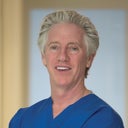What is the best way to preserve fat cells after full face transfer. My face is often tense ( I think a lot). Will that affect the fat transfer?
Answers (7)
From board-certified doctors and trusted medical professionals

Dr. Jason Emer, MD
Dermatologic Surgeon, Board Certified in Dermatology
Answer

Dr. John J. Martin, Jr., MD
Oculoplastic Surgeon, Board Certified in Ophthalmology
Answer
Dr. Julio Clavijo-Alvarez, MD, MPH, FACS
Board Certified Plastic Surgeon
Answer
Dr. Mats Hagstrom, MD (license on probation)
Board Certified Plastic Surgeon
Answer
More Facial Fat Transfer Questions
See all Facial Fat Transfer Q&AWE SEND PRETTY
EMAILS
What’s trending? Who’s turning heads? Which TikTok myths need busting? We’ve got you. No fluff, no gatekeeping—just real talk. Get our free, unfiltered newsletter.